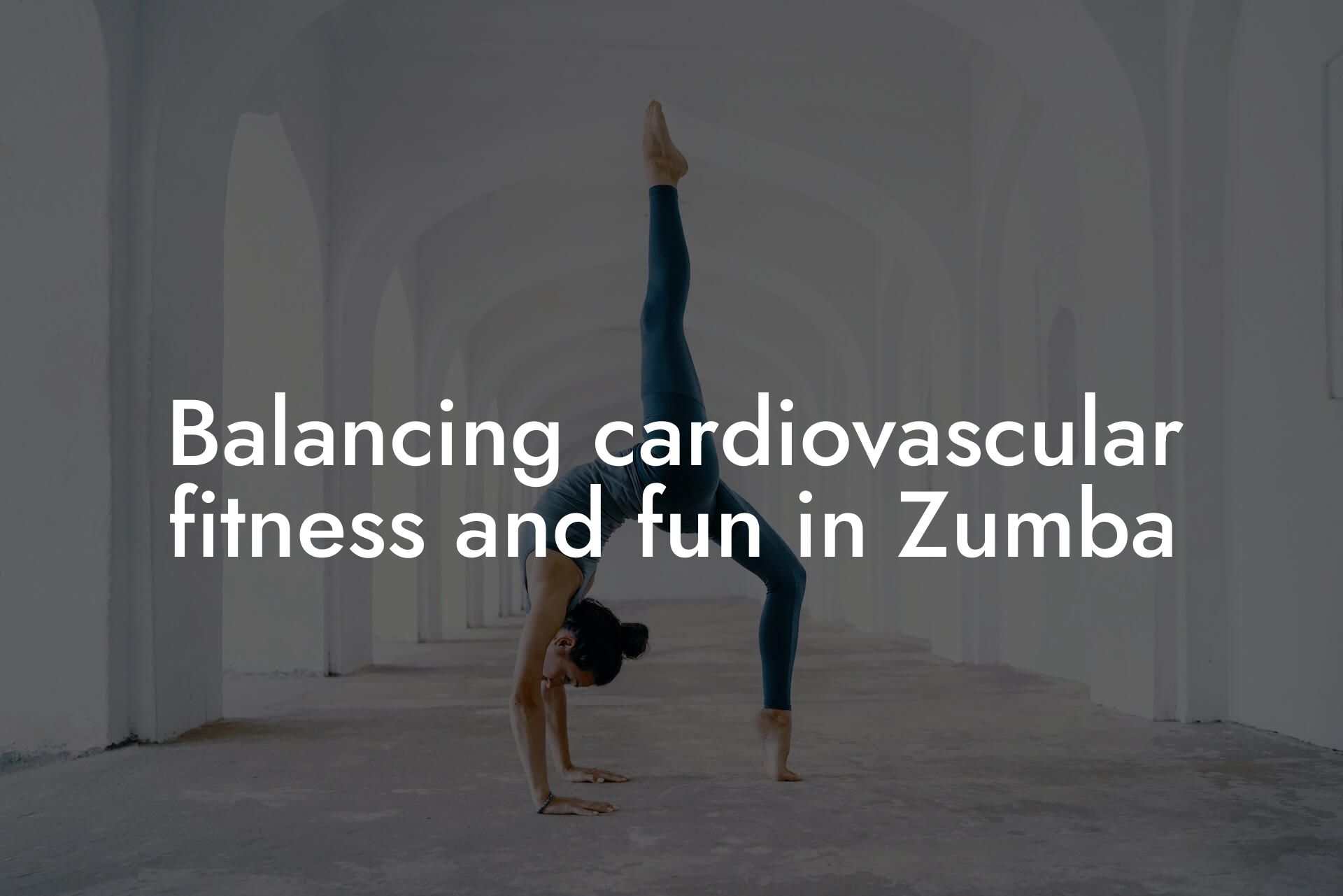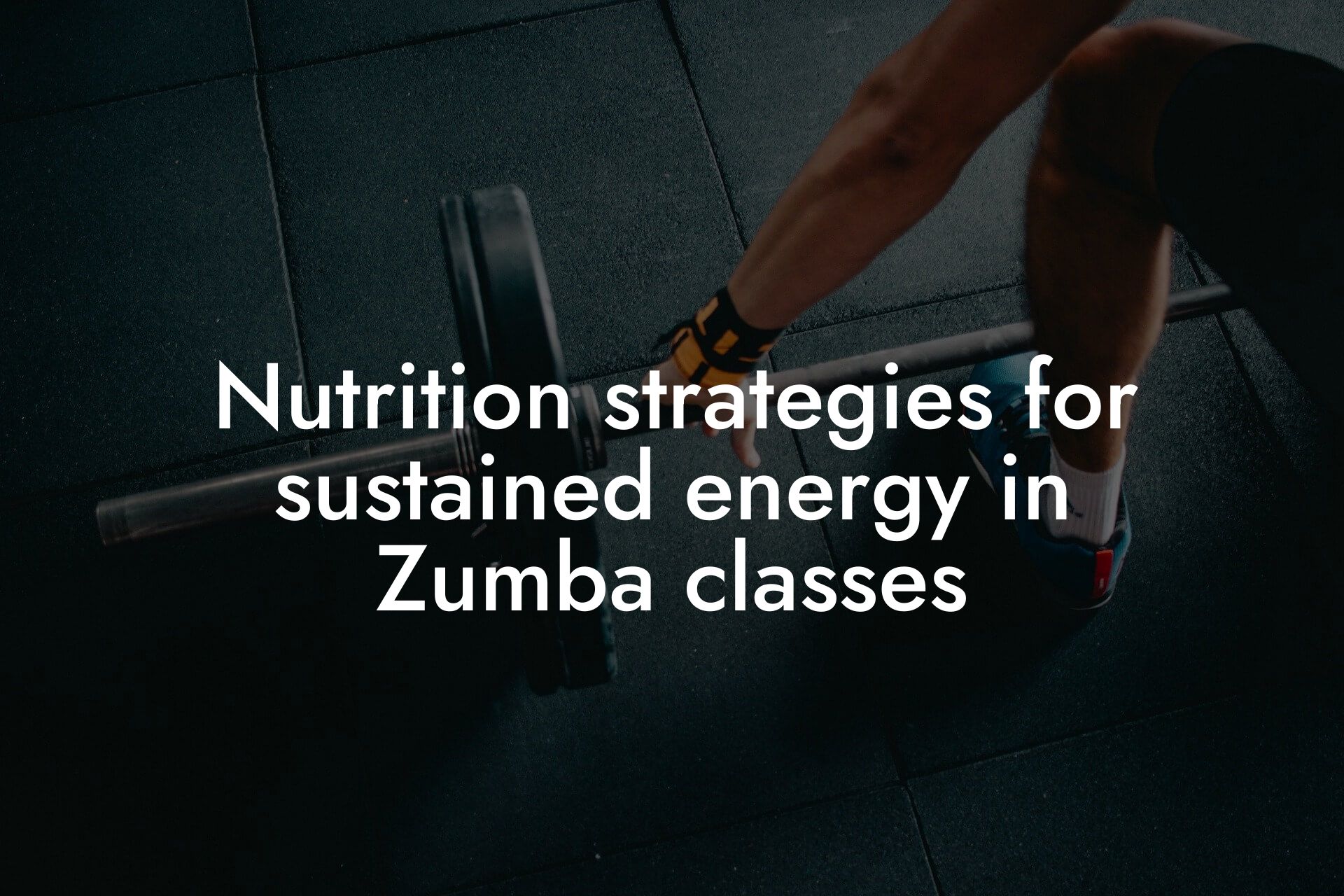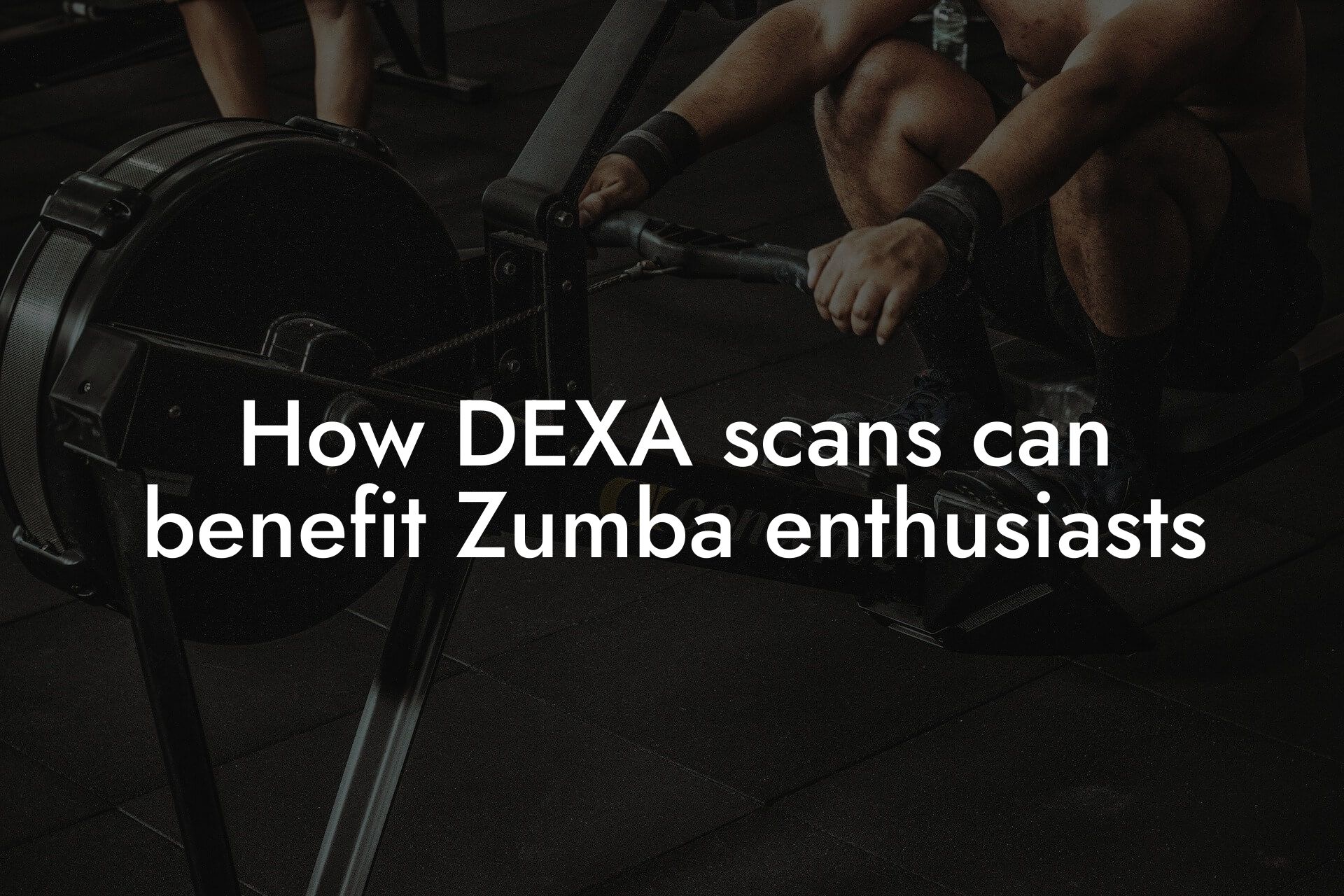As a high-earning professional, taking care of your physical appearance and overall health is crucial to performing at your best. Zumba dancing is an excellent way to stay active, but intense sessions can take a toll on your body. Proper recovery techniques are essential to prevent injuries, reduce muscle soreness, and improve overall performance. In this article, we will explore the best recovery techniques for Zumba dancers after intense sessions.
Table of Contents
Understanding the Importance of Recovery
Recovery is a critical component of any exercise routine, including Zumba dancing. When you engage in intense physical activity, your muscles undergo micro-tears, leading to inflammation and muscle soreness. If you don't allow your body time to recover, you may experience fatigue, decreased performance, and increased risk of injury. Adequate recovery helps to repair and rebuild your muscles, making you stronger and more resilient for your next Zumba session.
Stretching and Foam Rolling
Stretching and foam rolling are two of the most effective recovery techniques for Zumba dancers. After an intense session, take 10-15 minutes to stretch your major muscle groups, including your legs, hips, and back. Focus on static stretches that hold the muscle in a lengthened position for 20-30 seconds. This helps to increase flexibility, reduce muscle tension, and promote blood flow.
Foam rolling is another excellent way to aid in recovery. This self-myofascial release technique involves using a foam roller to apply pressure to specific areas of your body, helping to break up adhesions and reduce muscle soreness. Focus on rolling your IT band, quadriceps, and hamstrings, as these areas tend to be particularly prone to soreness after Zumba.
Hydration and Electrolytes
Adequate hydration is essential for recovery after an intense Zumba session. Drink plenty of water or a sports drink to replenish lost fluids and electrolytes. Electrolytes, such as sodium, potassium, and magnesium, play a crucial role in regulating muscle function and nerve impulses. Without sufficient electrolytes, you may experience muscle cramps, fatigue, and dizziness.
Aim to drink at least 16-20 ounces of fluid for every pound of body weight lost during exercise. You can also consume electrolyte-rich foods like bananas, avocados, and nuts to help replenish your stores.
Proper Nutrition
What you eat after an intense Zumba session can significantly impact your recovery. Focus on consuming a balanced meal or snack that includes a mix of carbohydrates, protein, and healthy fats. This helps to replenish energy stores, repair damaged muscles, and support immune function.
Some excellent post-Zumba snack options include:
- Greek yogurt with berries and honey
- Apple slices with almond butter
- Smoothie bowl with banana, spinach, and avocado
- Grilled chicken breast with quinoa and roasted vegetables
Rest and Sleep
Adequate rest and sleep are critical components of recovery after an intense Zumba session. Your body needs time to repair and rebuild damaged muscles, and this process occurs primarily during sleep. Aim for 7-9 hours of sleep each night to help your body recover from the physical demands of Zumba.
In addition to sleep, make sure to take rest days as needed. This doesn't mean you need to avoid exercise altogether, but rather take a break from high-intensity activities like Zumba. Engage in low-impact activities like yoga, walking, or light stretching to help your body recover.
Compression Garments and Elevation
Compression garments, such as tights or sleeves, can help improve blood flow and reduce muscle soreness after an intense Zumba session. These garments provide gentle compression to the affected area, helping to promote blood flow and reduce inflammation.
Elevation is another simple yet effective recovery technique. Elevate your legs above the level of your heart to reduce swelling and promote blood flow back to the heart. This can be especially helpful after a high-intensity Zumba session.
Cryotherapy and Heat Therapy
Cryotherapy, or ice therapy, is an excellent way to reduce inflammation and muscle soreness after an intense Zumba session. Apply ice to the affected area for 10-15 minutes, several times a day, to help reduce pain and inflammation.
Heat therapy, on the other hand, can help promote blood flow and relaxation. Apply heat to the affected area for 10-15 minutes, several times a day, to help reduce muscle tension and promote relaxation.
Massage and Self-Myofascial Release
Massage is an excellent way to aid in recovery after an intense Zumba session. A licensed massage therapist can help break up adhesions, reduce muscle tension, and promote blood flow. If you don't have access to a massage therapist, you can try self-myofascial release techniques like foam rolling or using a lacrosse ball to release tension in your muscles.
Remember to focus on areas that are particularly prone to soreness after Zumba, such as your legs, hips, and back. Take your time and work slowly, applying gentle pressure to the affected area.
DEXA Scanning for Optimal Recovery
At Tano Performance Group, we understand the importance of optimal recovery for high-earning professionals like yourself. That's why we offer DEXA scanning, a comprehensive body assessment that provides valuable insights into your body composition, bone density, and overall health.
With DEXA scanning, you can gain a better understanding of your body's specific needs, allowing you to tailor your recovery techniques and nutrition plan for optimal results. By combining DEXA scanning with the recovery techniques outlined in this article, you can take your Zumba performance to the next level and achieve your fitness goals.
Frequently Asked Questions
What are the common signs of muscle fatigue after an intense Zumba session?
Common signs of muscle fatigue after an intense Zumba session include muscle soreness, stiffness, and weakness. You may also experience muscle cramps, spasms, or tremors. In some cases, you may feel a burning sensation in your muscles, especially in your legs and glutes. These signs can vary in intensity and duration, depending on the individual and the intensity of the workout.
How long does it take for muscle soreness to go away after an intense Zumba session?
Muscle soreness, also known as delayed onset muscle soreness (DOMS), typically peaks within 24 to 48 hours after an intense workout and can last for several days. The exact duration depends on individual factors, such as fitness level, workout intensity, and recovery techniques. With proper recovery techniques, you can reduce the severity and duration of DOMS.
What is the importance of proper recovery techniques for Zumba dancers?
Proper recovery techniques are crucial for Zumba dancers to prevent injuries, reduce muscle soreness, and improve overall performance. Recovery techniques help to replenish energy stores, repair damaged muscles, and restore flexibility and range of motion. This enables dancers to return to their optimal performance level and reduce the risk of chronic injuries.
What are some common recovery techniques used by Zumba dancers?
Common recovery techniques used by Zumba dancers include stretching, foam rolling, self-myofascial release, massage, compression garments, ice baths, and active recovery techniques like yoga or light cardio. These techniques help to reduce muscle soreness, improve flexibility, and promote relaxation and recovery.
How can stretching help with recovery after an intense Zumba session?
Stretching helps with recovery by increasing blood flow to the affected muscles, reducing muscle spasms, and improving flexibility and range of motion. It also helps to reduce muscle soreness by promoting the removal of waste products, such as lactic acid, that can contribute to DOMS. Focus on static stretches that hold the muscle in a lengthened position for 15-30 seconds.
What is foam rolling, and how can it help with recovery?
Foam rolling is a self-myofascial release technique that involves using a foam roller to apply pressure to specific areas of the body. This helps to break up adhesions and scar tissue, reduce muscle tension, and improve blood flow. Foam rolling can be particularly helpful for Zumba dancers to target areas like the IT band, quadriceps, and hamstrings.
How can compression garments aid in recovery after an intense Zumba session?
Compression garments, such as tights or sleeves, provide graduated compression that helps to improve blood flow and reduce muscle soreness. They can also provide support and stability to the affected muscles, which can be beneficial for Zumba dancers who perform high-impact movements.
What is the benefit of active recovery techniques, such as yoga or light cardio, after an intense Zumba session?
Active recovery techniques, such as yoga or light cardio, help to promote blood flow and gentle movement, which can aid in the removal of waste products and reduce muscle soreness. They can also help to improve flexibility, balance, and coordination, which are essential for Zumba dancers.
How can nutrition play a role in recovery after an intense Zumba session?
Nutrition plays a critical role in recovery by providing the necessary building blocks for muscle repair and replenishing energy stores. Focus on consuming a balanced diet that includes protein, complex carbohydrates, and healthy fats within 30-60 minutes after an intense workout. Additionally, stay hydrated by drinking plenty of water or a sports drink.
What are some post-workout snacks that can aid in recovery?
Some post-workout snacks that can aid in recovery include bananas with peanut butter, protein shakes, Greek yogurt with berries, and energy bars. These snacks provide a mix of carbohydrates and protein to help replenish energy stores and support muscle repair.
How can sleep impact recovery after an intense Zumba session?
Sleep is essential for recovery, as it allows your body to repair and adapt to the physical demands of exercise. Aim for 7-9 hours of sleep each night to help your body recover from intense Zumba sessions. Poor sleep can impede recovery, leading to increased muscle soreness and decreased performance.
What are some common mistakes that Zumba dancers make when it comes to recovery?
Common mistakes that Zumba dancers make when it comes to recovery include neglecting to stretch or foam roll, not consuming adequate nutrition, and failing to get enough sleep. Additionally, dancers may not allow for adequate time for recovery between intense workouts, which can lead to chronic fatigue and increased risk of injury.
How can Zumba dancers incorporate recovery techniques into their busy schedules?
Zumba dancers can incorporate recovery techniques into their busy schedules by prioritizing self-care and making time for activities like stretching, foam rolling, and yoga. Even small amounts of time, such as 10-15 minutes, can be beneficial for recovery. Additionally, dancers can try to incorporate recovery techniques into their daily routine, such as stretching while watching TV or foam rolling during commercial breaks.
What are some signs that I need to take a rest day or modify my Zumba routine?
Signs that you need to take a rest day or modify your Zumba routine include persistent muscle soreness, fatigue, or pain that interferes with daily activities. Additionally, if you experience a decline in performance or notice changes in your mood, such as increased irritability or anxiety, it may be a sign that you need to take a rest day or modify your routine.
How can I modify my Zumba routine to accommodate recovery?
You can modify your Zumba routine to accommodate recovery by reducing the intensity or duration of your workouts, taking regular breaks, or substituting high-impact movements with lower-impact alternatives. Additionally, you can try incorporating more gentle movements, such as yoga or Pilates, into your routine to aid in recovery.
What are some common injuries that Zumba dancers are prone to, and how can recovery techniques help prevent them?
Common injuries that Zumba dancers are prone to include shin splints, plantar fasciitis, and knee injuries. Recovery techniques, such as stretching, foam rolling, and proper footwear, can help prevent these injuries by reducing muscle tension, improving flexibility, and promoting proper biomechanics.
How can I track my recovery progress and adjust my techniques accordingly?
You can track your recovery progress by monitoring your muscle soreness, fatigue, and performance. Keep a workout log or journal to track your progress and adjust your recovery techniques accordingly. Additionally, pay attention to your body and make adjustments as needed.
What are some additional resources that I can use to learn more about recovery techniques for Zumba dancers?
Additional resources that you can use to learn more about recovery techniques for Zumba dancers include online fitness websites, blogs, and social media platforms. You can also consult with a fitness professional or physical therapist who specializes in dance or group fitness.
How can I incorporate recovery techniques into my daily routine, even on non-workout days?
You can incorporate recovery techniques into your daily routine, even on non-workout days, by making them a habit. Try to incorporate activities like stretching, foam rolling, or yoga into your daily routine, such as during commercial breaks while watching TV or during your lunch break at work.
What are some common myths about recovery techniques for Zumba dancers?
Common myths about recovery techniques for Zumba dancers include the idea that recovery is only necessary for high-level athletes or that stretching is only necessary after a workout. However, recovery techniques are essential for all dancers, regardless of level or frequency of exercise, to prevent injuries and improve performance.
How can I make recovery a priority in my fitness journey as a Zumba dancer?
You can make recovery a priority in your fitness journey as a Zumba dancer by prioritizing self-care, making time for recovery techniques, and recognizing the importance of recovery in achieving your fitness goals. Remember, recovery is not a luxury, but a necessity for optimal performance and overall health.
Here are some related articles you might love...
- Balancing cardiovascular fitness and fun in Zumba
- Nutrition strategies for sustained energy in Zumba classes
- How DEXA scans can benefit Zumba enthusiasts
- Maintaining muscle tone and endurance in Zumba
- The role of Zumba in weight loss and overall health
- Strength training tips to complement your Zumba routine
- Reducing body fat for improved stamina and flexibility in Zumba
- Bone density and its role in Zumba performance
- The impact of body composition on Zumba performance
Zak Faulkner
Zak Faulkner is a leading authority in the realm of physical health and body composition analysis, with over 15 years of experience helping professionals optimise their fitness and well-being. As one the experts behind Tano Performance Group, Zak has dedicated his career to providing in-depth, science-backed insights that empower clients to elevate their physical performance and overall health.
With extensive knowledge of DEXA technology, Zak specializes in delivering comprehensive body assessments that offer precise data on body fat, muscle mass, bone density, and overall physique. His expertise enables individuals to make informed decisions and achieve their fitness goals with accuracy and confidence. Zak’s approach is rooted in a deep understanding of human physiology, combined with a passion for helping clients unlock their full potential through personalised strategies.
Over the years, Zak has earned a reputation for his commitment to excellence, precision, and client-focused service. His guidance is trusted by top professionals who demand the best when it comes to their health. Whether advising on fitness programs, nutritional strategies, or long-term wellness plans, Zak Faulkner’s insights are a valuable resource for anyone serious about taking their health and fitness to the next level.
At Tano Performance Group, Zak continues to lead our Content Team revolutionising how professionals approach their physical health, offering unparalleled expertise that drives real results.




